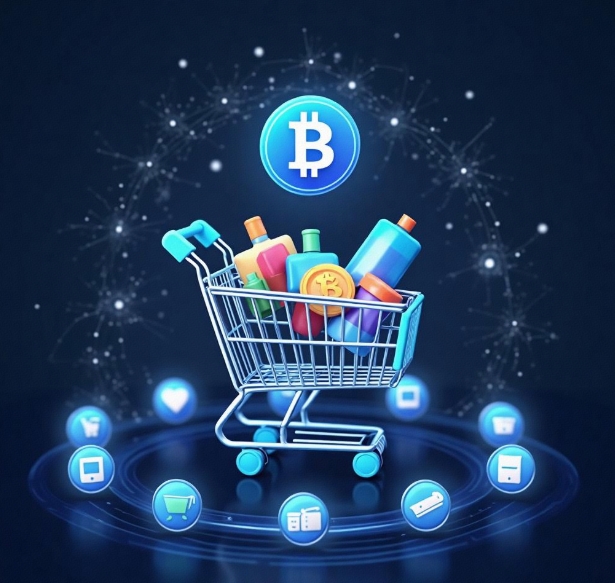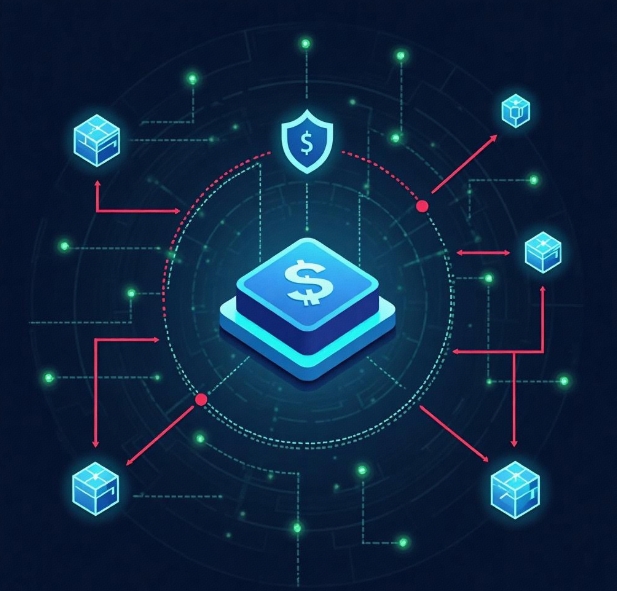What technical skills are required for Web3 e-commerce development?
- latest articles
- 1.DApp Development & Customization: Merging Diverse Market Needs with User Experience 2.Analysis of the Core Technical System in DApp Project Development 3.How to achieve cross-chain interoperability in Web3 projects? 4.How does the tokenization of points reconstruct the e-commerce ecosystem? 5.How to Set and Track Data Metrics for a Points Mall? 6.What is DApp Development? Core Concepts and Technical Analysis 7.Inventory of commonly used Web3 development tools and usage tips 8.Development of a Distribution System Integrated with Social E-commerce 9.Six Key Steps for Businesses to Build a Points Mall System 10.What is DApp Development? A Comprehensive Guide from Concept to Implementation
- Popular Articles
- 1.Future Trends and Technology Predictions for APP Development in 2025 2.Analysis of the DeFi Ecosystem: How Developers Can Participate in Decentralized Finance Innovation 3.From Zero to One: How PI Mall Revolutionizes the Traditional E-commerce Model 4.DAPP Development | Best Practices for Professional Customization and Rapid Launch 5.Recommended by the Web3 developer community: the most noteworthy forums and resources 6.How to Develop a Successful Douyin Mini Program: Technical Architecture and Best Practices 7.From Cloud Computing to Computing Power Leasing: Building a Flexible and Scalable Computing Resource Platform 8.Shared Bike System APP: The Convenient Choice in the Era of Smart Travel 9.How to Create a Successful Dating App: From Needs Analysis to User Experience Design 10.From Design to Development: The Complete Process of Bringing an APP Idea to Life
With the continuous development of blockchain technology, Web3, as one of its important application scenarios, is increasingly attracting more and more attention. Web3 not only represents the decentralized concept of the internet but also provides various industries with new technological architectures and business models. As a crucial component of the Web3 ecosystem, Web3 marketplaces are becoming the forefront of innovative e-commerce models. So, what technical reserves are needed to develop a Web3 marketplace? This article will analyze the required technology stack, tools, platforms, and development frameworks from a technical perspective.
1. Understanding the Basic Concepts of Web3 and Web3 Marketplaces
Before discussing the technical reserves for developing a Web3 marketplace, we first need to clarify the basic concept of Web3. Web3, often referred to as the "decentralized web," is the next generation of the internet following Web1.0 and Web2.0. Web1.0 was an internet of static pages where users could only browse content; Web2.0 is a dynamic and highly interactive internet that has driven the development of social media, e-commerce, and other fields. Web3, on the other hand, emphasizes decentralization, leveraging blockchain technology to achieve trustlessness, autonomy, and transparency, enabling users to directly exchange assets and create value without the intervention of centralized institutions.
A Web3 marketplace is an e-commerce platform built on Web3 technology, providing users with services such as transactions, payments, and data storage through technologies like smart contracts, cryptocurrencies, and decentralized storage, reducing reliance on intermediaries and enhancing the security and transparency of transactions. Compared to traditional Web2.0 marketplaces, the core differences of Web3 marketplaces lie in their decentralization, immutability of data, and trustless nature.
2. Technical Reserves for Web3 Marketplace Development
Developing a complete Web3 marketplace involves reserves in multiple technical fields, including blockchain technology, smart contract development, decentralized storage, encryption technology, front-end and back-end development, etc. Below, the key elements of each technical field will be detailed.
1. Blockchain Technology
Blockchain is one of the core technologies of Web3 marketplaces, providing a decentralized infrastructure. Developers need to master the characteristics and usage of different blockchain platforms and choose the one that suits their marketplace needs. Currently, the most commonly used blockchain platforms include Ethereum, Binance Smart Chain, Solana, etc.
Ethereum: As the most mature smart contract platform, Ethereum provides strong support for Web3 marketplaces. Ethereum's smart contracts and ERC-20 token standards enable the automation of transactions and payments.
Binance Smart Chain (BSC): BSC is an efficient and low-cost blockchain platform, very suitable for large-scale e-commerce applications. It is compatible with Ethereum smart contracts, so developers can easily port existing Ethereum contracts to BSC.
Solana: Solana is known for its high throughput and low latency, making it suitable for Web3 marketplaces that require fast transaction confirmation and high concurrency.
When developing a Web3 marketplace, choosing the right blockchain platform is crucial, and factors such as cost, performance, and security need to be weighed according to the project's requirements.
2. Smart Contract Development
Smart contracts are essential tools for achieving decentralized transactions in Web3 marketplaces. They are self-executing contracts deployed on the blockchain that can automatically fulfill contract terms based on preset rules without third-party intervention. In marketplaces, smart contracts can be used for order processing, payment settlement, transfer of product ownership, and more.
Solidity: Solidity is the most commonly used programming language for smart contracts on Ethereum and other EVM-compatible blockchain platforms. When developing a Web3 marketplace, mastering Solidity is typically required to write smart contracts.
Rust: Rust is the smart contract development language for the Solana blockchain. If developing a Web3 marketplace based on Solana, mastering Rust is necessary.
Smart Contract Security: The security of smart contracts is crucial. Developers need to understand how to write secure smart contracts, avoid common vulnerabilities (such as reentrancy attacks, integer overflows, etc.), and use tools for contract auditing and verification.
3. Decentralized Storage
Web3 marketplaces need to handle large amounts of data such as product information, transaction data, and user profiles, which must be stored securely and immutably. Decentralized storage technology addresses this issue, ensuring data security and durability.
IPFS (InterPlanetary File System): IPFS is a decentralized file storage system that ensures secure storage and high availability of files by splitting them into multiple blocks and distributing them across global nodes. Content such as product images and user profiles in Web3 marketplaces can be stored in IPFS.
Arweave: Arweave is another decentralized storage solution that emphasizes permanent storage. When developing a Web3 marketplace, important data can be stored permanently on Arweave.
4. Encryption Technology
Web3 marketplaces need to ensure the privacy and security of user transactions, and encryption technology plays a vital role in this. Common encryption technologies include symmetric encryption, asymmetric encryption, and hash algorithms. Developers need to understand how to use encryption algorithms to protect users' personal information, transaction data, etc.
Wallet and Private Key Management: The payment system of Web3 marketplaces typically relies on user wallets. Users' wallets sign transactions with private keys to ensure transaction security. Common Web3 wallets include MetaMask, WalletConnect, etc.
Transaction Signing and Verification: In Web3 marketplaces, every user transaction needs to be verified for legitimacy through digital signatures. Developers need to understand how to implement transaction signing and verification mechanisms.
5. Front-End Development
Front-end development for Web3 marketplaces involves the user interface and user experience design. Compared to traditional Web2 marketplaces, front-end development for Web3 marketplaces requires integrating blockchain technology and wallet functionality.
Web3.js and Ethers.js: These JavaScript libraries help the front-end interact with the blockchain, enabling functions such as wallet connection and transaction signing.
React and Vue.js: React and Vue.js are currently mainstream front-end frameworks that help developers build efficient and responsive user interfaces.
6. Back-End Development
Back-end development for Web3 marketplaces involves core business logic, database design, order processing, and other functions. Due to the decentralized nature of Web3 marketplaces, back-end design differs from that of traditional marketplaces.
Decentralized Identity Authentication: Web3 marketplaces typically do not rely on traditional usernames and passwords but use blockchain addresses for identity authentication. Users can log in via wallets (such as MetaMask).
Smart Contract and Back-End Interaction: The back-end system needs to interact with smart contracts to obtain product information, order status, etc.
Database: Although important data in the marketplace (such as user data and transaction records) should be stored on decentralized platforms, some data (such as user preferences and browsing history) may still need to be stored in traditional databases. Developers need to choose appropriate database technologies (such as MongoDB, PostgreSQL, etc.).
3. Development Tools and Platforms
In addition to technical reserves, developing a Web3 marketplace requires the use of some tools and platforms to improve development efficiency.
Truffle and Hardhat: These two tools are commonly used frameworks for Ethereum smart contract development, providing functions such as compilation, testing, and deployment of smart contracts.
Infura and Alchemy: These services provide access interfaces to Ethereum nodes, allowing developers to quickly access the blockchain network without setting up their own nodes.
Metamask and WalletConnect: These wallet plugins help the front-end interact with user wallets, enabling functions such as transaction signing and identity verification.
4. Summary
Developing a Web3 marketplace involves knowledge and skills in multiple technical fields, including blockchain technology, smart contract development, decentralized storage, encryption technology, front-end and back-end development, etc. Developers need to choose the appropriate technology stack based on their project requirements and master the relevant tools and platforms. As Web3 technology continues to mature, future Web3 marketplaces will provide users with a more secure, transparent, and decentralized shopping experience and will become an important application scenario for blockchain technology.
-

How does the tokenization of points reconstruct the e-commerce ecosystem?
With the continuous advancement of internet technology and the gradual prolifera···
-

How to Set and Track Data Metrics for a Points Mall?
With the rapid development of the e-commerce industry, points malls, as a common···
-

Development of a Distribution System Integrated with Social E-commerce
With the rapid development of internet technology, the e-commerce industry has e···

 Blockchain
Blockchain












